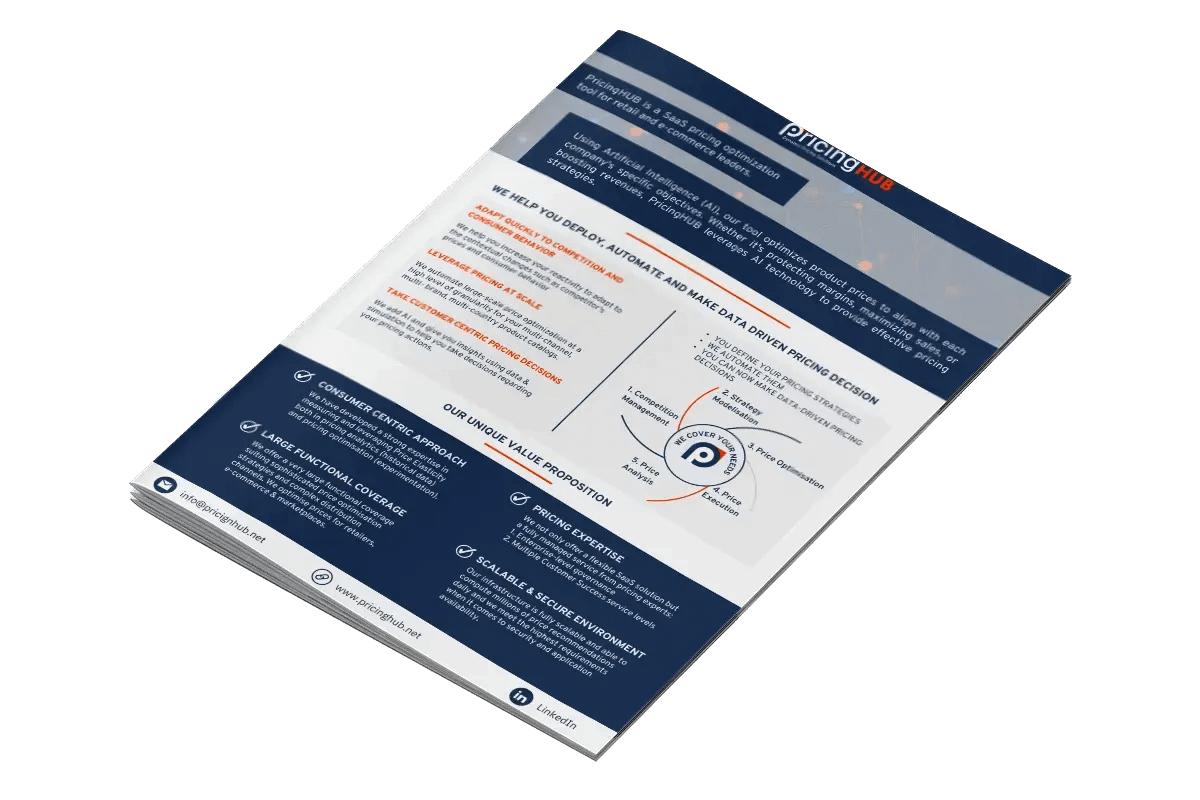In today’s competitive market, understanding and utilizing sales index can significantly influence your business strategies and outcomes. This article aims to demystify the sales index, guiding you through its definition, calculation, and enhancement methods, with a particular focus on improving pricing strategies through tools like PricingHUB. Find out more about pricing concepts here. TL;DR The Sales Index is a key metric that measures the relative change in sales volume over a specific period, helping businesses assess performance and market trends. Calculated by comparing current sales data to a base period, it provides actionable insights into sales efficiency and market penetration. To enhance the sales index, businesses can analyze market trends, diversify sales channels, and optimize product offerings. Additionally, understanding customer demographics, behaviors, and price sensitivity is crucial for tailoring effective pricing strategies. The sales index is a critical metric that quantifies the relative change in sales volume over a specified period. It helps businesses track performance, forecast trends, and adjust strategies to better meet market demands. By analyzing the sales index, companies in retail and other sectors can gain insights into their sales efficiency and market penetration. This metric, integral to strategic planning, is particularly valuable in sectors driven by price fluctuations and consumer demand patterns. This indicator is valuable especially for retails and e-commerce as it can provide information not only on the habits of your consumers, but also on your own business trends and the evolution of your market. Calculating the sales index involves a few key steps. Typically, it starts with selecting a base year as a standard for comparison. Sales data from the base year and the year under review are then used to determine the index. The formula is relatively straightforward: This calculation yields a percentage that reflects growth or decline, providing actionable insights into sales performance. Increasing your sale index involves a strategic blend of understanding your market and customers, optimizing operational processes, and dynamically adjusting your pricing strategies. Here’s how you can approach each of these areas: Client analysis is crucial for tailoring your marketing, sales and pricing strategies. In order to implement an effective and relevant pricing strategy, some client analysis segments need to be taken into account such as : Find out how our tool helps you manage your pricing strategies to maximise your sales and bottom line. Improving customer experience is about ensuring customer satisfaction and building long-term relationships: Effective pricing strategies are key to improving the sales index. Here’s how you can optimize pricing: Each of these areas requires careful consideration and a strategic approach to effectively boost your sales index. By focusing on these key aspects, you can enhance your understanding of the market and customer behaviors, deliver superior customer experiences, and adopt pricing strategies that drive sales and profit growth. PricingHUB offers advanced tools that utilize artificial intelligence and machine learning algorithms to optimize pricing strategies. By integrating PricingHUB, businesses can leverage real-time data analytics about market, stocks or clients behavior to help set optimal prices for your products. Our machine learning technology runs continuous tests to determine the elasticity of your product and offers you prices that adapt instantly according to the real conditions of your market and the sales target you have set as objective. This not only helps in maximizing profits but also improves the retail sales index by making prices more competitive and aligned with market trends! The sales index is a vital metric that provides insights into sales performance and market trends. By understanding and calculating this index, businesses can better strategize their operations. Moreover, businesses can significantly boost their sales index by conducting effective client analysis, enhancing customer experiences, and using tools like PricingHUB for pricing optimization. As the market continues to evolve, staying ahead in pricing strategies is the key to maintaining and improving sales performance.Do you want to unleash the power of pricing ? Request a demo with one of our experts! The sales index is a performance metric that quantifies sales growth or decline over time, helping businesses understand how their sales are progressing relative to past periods. It is crucial because it enables companies to assess their overall sales performance, identify trends, and make data-driven decisions to improve profitability. The sales index directly impacts business performance by offering insights into how well a company is meeting its sales targets. A rising sales index signals growth, while a declining index can indicate issues in strategy or market conditions. Businesses can use this data to adjust pricing, marketing efforts, and operational strategies to stay competitive and optimize revenue. The sales value index measures the monetary value of sales during a given period, while the sales index tracks the relative change in sales volume. While both indices serve to assess sales performance, the sales value index provides a more direct measure of revenue, whereas the sales index is focused on performance over time and can be adjusted for inflation and external factors. Businesses can use the sales index to inform pricing and sales strategies by tracking trends in demand and consumer behavior. A higher sales index might justify premium pricing, while a lower index could prompt businesses to revise prices or run promotions. Additionally, sales index data helps identify seasonal trends, allowing businesses to optimize their product pricing and availability for maximum impact. Sales indices vary across industries and markets due to different market dynamics, such as competition, demand fluctuations, and economic conditions. For example, the sales index in retail might be heavily influenced by consumer behavior and seasonal trends, while in tech, product launches and innovation cycles play a significant role. Understanding these variations helps businesses tailor their sales and pricing strategies to specific market conditions. Sales Index: Everything You Need to Know to Improve Your Business Performance
What is a sales index and why does it matter?
How is the sales index calculated?
How can you increase your sales index effectively?
Analyzing your clients to uncover opportunities
Optimise your prices and maximise your business objectives and performance
Enhancing customer experience to drive repeat sales
Implementing an effective pricing strategy
How PricingHUB helps you optimize your sales index and pricing strategy
Frequently Asked Questions about sales index


